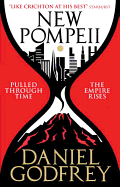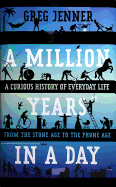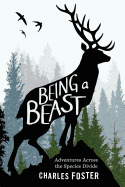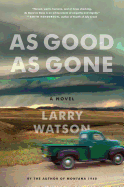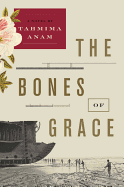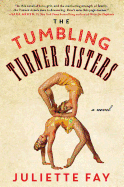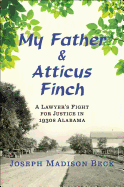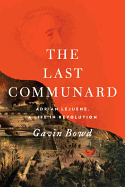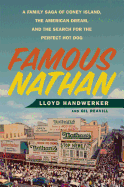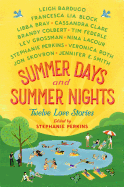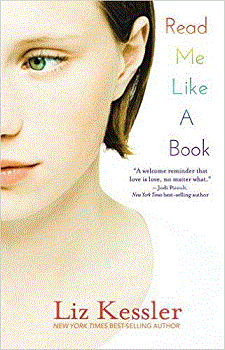Friday, June 24, 2016
Reading on the beach, on the porch, on vacation, on the weekend--what we're usually after is sheer entertainment. If you are wilting in the heat, you could cool off with the chilly The Loney by Andrew Michael Hurley (Houghton Mifflin Harcourt), set on the Lancashire coastline--dark and foreboding. We said Hurley's debut has "a sense of menace from the first page and builds 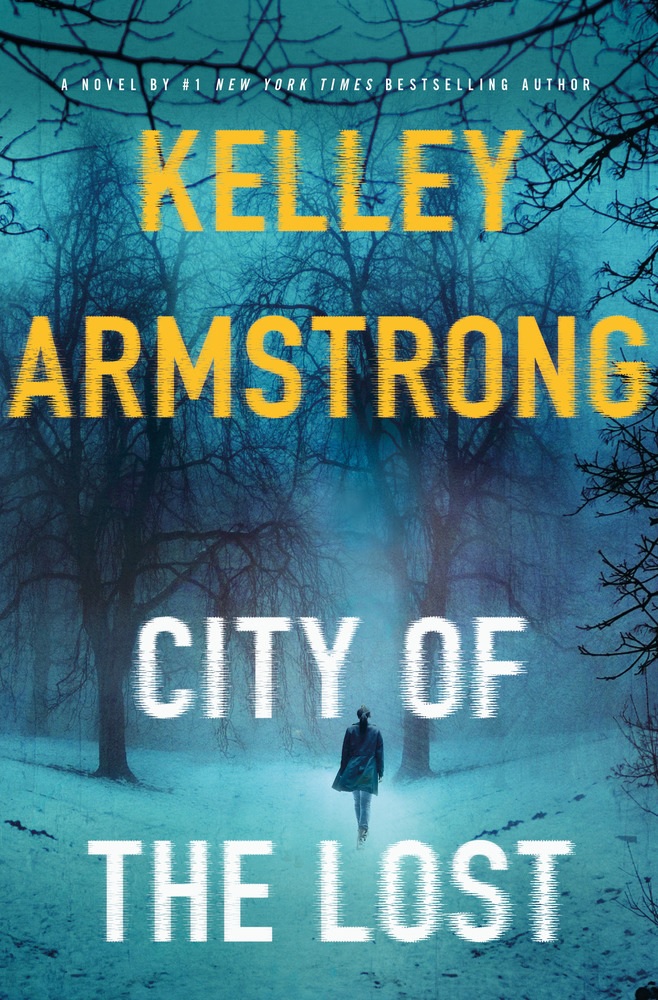 into a creepy tale that explores deep questions of faith and doubt." With another cold, ominous setting, Kelley Armstrong introduces homicide detective Casey Duncan in City of the Lost (Minotaur). Casey begins her story with " 'I killed a man,' I say to my new therapist." It was in college, not in the line of duty, and it dogs her as she tracks a serial killer in a hidden community in the wilds of Canada.
into a creepy tale that explores deep questions of faith and doubt." With another cold, ominous setting, Kelley Armstrong introduces homicide detective Casey Duncan in City of the Lost (Minotaur). Casey begins her story with " 'I killed a man,' I say to my new therapist." It was in college, not in the line of duty, and it dogs her as she tracks a serial killer in a hidden community in the wilds of Canada.
Reading The Defense by Steve Cavanagh (Flatiron Books), I was knocked out by the breakneck pace, twisted plot and thrills. Eddie Flynn used to be a con artist. Now he's a lawyer, but ceased practicing after a case gone wrong. He is forced to return to the courtroom by the Russian mob, who have his daughter. Flynn has only 48 hours to win the case--or con his way to a conclusion. 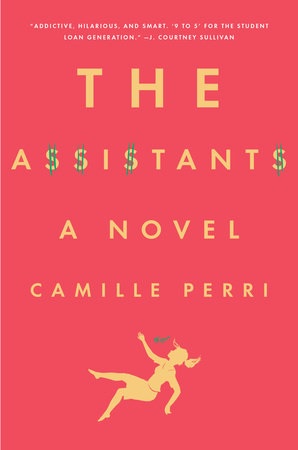 In Camille Perri's raucous debut novel, The Assistants (Putnam), a media mogul's smart young assistant almost by accident creates a scheme to skim expense account money to cover her and her colleagues' student loan debts. Our reviewer wrote, "It's great fun... just sit back and let a smart, funny writer entertain."
In Camille Perri's raucous debut novel, The Assistants (Putnam), a media mogul's smart young assistant almost by accident creates a scheme to skim expense account money to cover her and her colleagues' student loan debts. Our reviewer wrote, "It's great fun... just sit back and let a smart, funny writer entertain."
Allison Amend's Enchanted Islands (Nan A. Talese/Doubleday) is a fictional memoir based on the life of Frances Conway, who lived with her husband, Ainslie, on the Galápagos Islands in the 1930s and '40s. Their marriage is orchestrated by U.S. Naval Intelligence, and Franny is part of his cover while he monitors suspected German spies. "With a wide-ranging, adventuresome plot and a humbly engaging protagonist, Enchanted Islands is a gorgeous piece of historical fiction."
As Good As Gone
by Larry Watson
Fans of Larry Watson (Montana 1948, Let Him Go) will recognize his mastery of foreshadowing in his 10th novel, As Good As Gone: here's an ordinary family in a nondescript small town, but something's simmering. And when it erupts, readers are in for a heart-pounding read.
It's a typical July for the Sideys in 1963 Gladstone, Mont. Bill works as a realtor like his estranged dad, Cal, before him; his wife, Marjorie, cares for the home; 17-year-old Ann works at Penney's; and Will, 11, is content to bike and fish. When Bill's mother died suddenly, Cal spiraled into grief and drinking before abruptly leaving his two young children with his mother. Mostly absent since, he lives the cowboy life in an isolated trailer, reading classics in Latin by a kerosene lantern.
Marjorie decides to travel 400 miles to Missoula for a needed surgery that brings Cal Sidey back to town. Harboring a hope to reunite the family, Bill asks Cal to stay with Ann and Will while he and Marjorie are away. Though Bill's family is skeptical of the mysterious Cal, he agrees to return to a town whose memories still haunt him.
The Gladstone of the '60s is strange to Cal, a man recalled by a neighbor as someone "with the ability to inspire--simultaneously?--courtesy and terror in others and himself." Mild-mannered as he seems, the suspicion lurks: Is he capable of violence? What really drove him from Gladstone? When Ann's boyfriend, a "hood, a hell-raiser," turns ugly, and bullies threaten Will, Cal's protectiveness sparks his temper. Watson keeps readers speculating until the end of this tense, fast-paced story of family drama as modern times clash with Old West mores. --Cheryl Krocker McKeon, manager, Book Passage, San Francisco
Discover: A mysterious loner agrees to look after his grandchildren in the Montana town he fled years before.
We Could Be Beautiful
by Swan Huntley
Swan Huntley intimately explores the psyche of a 43-year-old, still single, affluent New Yorker in her first novel, We Could Be Beautiful. Despite her success as the owner of an upscale handmade stationery shop, Catherine West feels terribly incomplete, like a failure, until she meets handsome and striking William Stockton, a widower and independently wealthy investment banker in his 50s, at an art gallery opening. "There was something familiar about him," Catherine says of their first encounter. They learn they share a love of fine art and a history--they come from the same privileged societal class, and their parents had been friends years earlier.
When Catherine tells her mother, Elizabeth, about William, and inquires as to what she might remember about him and his family, her mother's curt, agitated response is jarring. Catherine blames her reaction on her Alzheimer's, and William later admits that Elizabeth might be remembering that, as a boy, he was once a guest in their home and broke an expensive vase. The explanation seems plausible as William and Catherine move in together and begin planning their wedding. However, their blissful romance is marred once Catherine discovers an old diary her mother kept and a letter from a former nanny, which may shed light into Elizabeth's troubled reaction to William.
Deception and greed are suspenseful undercurrents that propel this well-plotted, seductive psychological thriller. Huntley has created a riveting heroine in whom readers will eagerly invest as she is forced to unravel the truth about a man who seems too good to be true and a shrouded past that may hold the key to her future. --Kathleen Gerard, blogger at Reading Between the Lines
Discover: A wealthy single woman falls hard for a handsome, charismatic and attentive older man who may--or may not--be harboring secrets.
The Bones of Grace
by Tahmima Anam
Tahmima Anam (The Good Muslim) again takes readers into the heart of the Bengal region in this third outing with the Haque family, this time set in the modern day.
Bangladeshi to the core, Zubaida Haque never intended to stay in the U.S. after finishing her paleontology degree at Harvard. Her plan was always to return to the loving arms of her family in Dhaka and marry Rashid, her childhood sweetheart. However, meeting Elijah Strong challenges her assumptions. A stranger sitting next to her at a Shostakovich concert in Boston, Elijah comforts Zubaida when she cries during the performance, moved less by the music than by the unbidden memory of her ninth birthday, when her parents revealed she was adopted. Suddenly her spontaneous emotional moment becomes the beginning of a soul-deep connection to this American, and they strike up a passionate friendship. Even when Zubaida goes on an archeological dig in Pakistan, to find one of the modern whale's land-dwelling ancestors, she cannot let Elijah go, exchanging coded texts with him.
Beauty and pain thrive alongside one another in Anam's intricate tragedy of thwarted love and deep divides in social classes. Traditional gender roles and expectations still hinder Zubaida, and her family closely guards the secret of her origin for fear it will taint her in society's eyes. The poor and broken march past, their stories painfully laid bare to us, as Zubaida struggles to integrate her need for her family and her desire to cut her own path in the standalone last part of a compelling three-generation series. --Jaclyn Fulwood, blogger at Infinite Reads
Discover: A Bangladeshi woman falls for an American at Harvard and struggles to reintegrate when she returns home to marry her childhood sweetheart.
The Tumbling Turner Sisters
by Juliette Fay
The vaudeville era is authentically brought back to life in The Tumbling Turner Sisters by Juliette Fay (The Shortest Way Home). The story follows the plight of a hardworking, near-poverty-level family in Johnson City, N.Y., in 1919 after the patriarch, Frank, a lowly shoemaker, has his hand crushed when he tries to break up a barroom brawl. With Frank unable to work and bills piling up, determined mother Ethel, who'd always craved stardom, seeks to remedy the family's misfortune by recruiting her four daughters (ages 13 to 22) into forming a sister act of vaudeville tumblers.
The story is told from the perspectives of the middle sisters: Winnie, who wants to go to college and become a doctor, and Gert, no-nonsense and curvy-figured, who longs for a better life than her mother's. Rounding out the quartet are Kit, the youngest and tallest of the bunch, and Nell, the oldest, a young mother and recent widow. It doesn't take long for the sisters to attract the attention of an agent, who launches them on a tour through upstate New York, where they encounter a host of colorful performers including a Yiddish comedy duo, an African American tap dancer, Italian immigrant musicians and temperamental animal handlers.
As the girls and their mother become immersed in the grueling vaudeville circuit, their mettle is tested. They are forced to discover who they are and the realities of life amid romantic attractions, con men and issues of women's rights and racial discrimination. Fay's historical novel probes the personal lives and questions of the era with adventure and aplomb. --Kathleen Gerard, blogger at Reading Between the Lines
Discover: Four sisters launch a vaudeville act to rescue their working-class family when it falls on hard times.
Science Fiction & Fantasy
New Pompeii
by Daniel Godfrey
Daniel Godfrey's New Pompeii is a time-travel thriller that pays homage to Michael Crichton, substituting ancient Romans for resurrected dinosaurs. Crichton's novels generally follow a basic, almost mathematical formula: overweening ambition plus entropy equals a lot of dead people. Godfrey proves the soundness of that formula by replicating it, with entertaining results.
In New Pompeii, a controversial company called Novus Particles has developed the capability to pull objects, animals and even people from the past to the present day. Protagonist and struggling Ph.D. student Nick Houghton is hired by Novus Particles to serve as a historical adviser on its secret project to re-create the ancient city of Pompeii. Zapping the inhabitants forward in time just before they were buried under a mountain of ash, the company has built a replica-Pompeii in a remote location to encourage the Romans to return to business as usual. The true purpose of New Pompeii doesn't become clear until the final chapters, but suffice it to say that the Romans aren't the only ones harboring dangerous schemes.
Much like Crichton, Godfrey seems most at home delving into the nerdy details of his thought experiment, bringing to life the world of the Pompeiians with a convincing degree of historical accuracy. Godfrey does indulge his readership by trotting out the expected gladiator battles and political backstabbing, but he manages to be surprisingly frank and even-handed toward the Romans. New Pompeii succeeds as a sci-fi-inflected thriller on the strength of the author's earnest approach to his outlandish premise. --Hank Stephenson, bookseller, Flyleaf Books
Discover: New Pompeii combines historical and thriller genre fiction for a time travel story about ancient Romans wreaking havoc in the present day.
Biography & Memoir
My Father and Atticus Finch: A Lawyer's Fight for Justice in 1930s Alabama
by Joseph Madison Beck
In 1938, a black man was charged with raping a white woman in Troy, Ala. The Scottsboro cases were still fresh in the minds of judges and lawyers everywhere. Foster Beck, a respected attorney in Enterprise, Ala., received a phone call from Judge W.L. Parks requesting that he represent the accused in what would become the highly publicized State of Alabama v. Charles White, Alias. Joseph Madison Beck, Foster Beck's son, uses oral family history, newspaper reports, transcripts from the trial and the Alabama Supreme Court decision to reconstruct his father's determined defense, which includes many parallels to the rape case in Harper Lee's To Kill a Mockingbird.
Though the author's style of switching between a first-person narrator and an omniscient narrator disrupts the flow of My Father and Atticus Finch, the portrayal of his father's optimism and faith in a system staunchly resistant to change shines a glaring spotlight on the lengths people will go in order to justify bias. Foster Beck's father warns him, "You can't enforce a law that's crossways with what a jury will support."
Atticus Finch would never win Tom Robinson's case, and he knew that. Foster Beck would never win Charles White's case but, like Jem Finch, he overestimated the jury's neutrality. The two men share many characteristics but have plenty of differences as well. While this case may or may not have subconsciously influenced Harper Lee, Foster Beck's story is one worth knowing and full of lessons valuable three quarters of a century later. --Jen Forbus of Jen's Book Thoughts
Discover: A real-life Atticus Finch puts his career on the line to fight racism in the 1930s.
The Last Communard: Adrien Lejeune, the Unexpected Life of a Revolutionary
by Gavin Bowd
In 1871, during the Franco-Prussian War, Napoleon III, Emperor of France, was captured by German forces, and the Imperial French government collapsed. In leftist Paris, socialist revolutionaries declared the establishment of the Paris Commune, decreed a separation of church and state, deployed a national guard and attempted to, in later parlance, establish a proletarian regime. The Commune was swiftly, brutally crushed by conservative French forces and their royal Prussian supporters. One of the Communards, Adrien Lejeune, managed to survive execution, was imprisoned, eventually pardoned and then left for the U.S.S.R. in the 1930s. During World War II, he fled further east to Siberia, where he died, last survivor of the Communards, in 1942, aged 95.
In The Last Communard, Gavin Bowd (Fascist Scotland) combines the scant biography of Lejeune with the development of Communism in France and Russia, as well as efforts by various parties to interpret the meaning and significance of the Commune and to valorize Lejeune. "The records of Lejeune's revolutionary acts are as mixed as the rest of his life, combining idealism, myth-making and all-too-human frailty."
Bowd assumes that readers possess a certain knowledge of Communist intellectual history, political actors, organizations and, more generally, 19th-century European history. He capably details the near-constant ideological and political schisms within the various Communist movements during both of the world wars. As a result, The Last Communard effectively dissects what is known and what is believed about Lejeune. --Evan M. Anderson, collection development librarian, Kirkendall Public Library, Ankeny, Iowa.
Discover: This concise biography portrays a participant in the Paris Commune and the ideological struggle over his identity and meaning.
Famous Nathan: A Family Saga of Coney Island, the American Dream, and the Search for the Perfect Hot Dog
by Lloyd Handwerker and Gil Reavill
The story of the hot dog may have begun in the Old World, but its renaissance came courtesy of its immigration to the United States, specifically New York, where the frankfurter evolved from pushcart snack to gourmet restaurant fare. Nowhere did it make a bigger statement than on Coney Island, where the nickel frankfurter turned Nathan Handwerker, an impoverished and spendthrift Polish immigrant with no formal schooling but a nose-to-the-grindstone attitude and dogged determination, into a national institution. Nathan's rags-to-riches story is retold by a grandson who knew the legend but knew little about the tough boss who was fanatical about the quality of his food and the manner in which it was delivered.
Filmmaker Lloyd Handwerker's Famous Nathan was originally a 2015 documentary comprising archival footage and interviews he gathered starting in the 1980s. The written biography is a touching tribute to his grandfather and to Nathan's mythology. It is the story of an immigrant manifesting the American dream on the grandest stage. It is also the classic story of a family torn apart by generational divides: "Take two brothers with different outlooks, values, and personalities and then add in a strong-willed father with very distinct and determined ideas of his own, and there was little wonder that the atmosphere around Surf and Stillwell [location of Nathan's Famous] became increasingly fraught." While casting a more sympathetic eye on his father and Nathan's younger son, Sol, Lloyd remains honest about the family history, giving reverence where reverence is due. Famous Nathan aches with sentimentality and nostalgia for a lost era. --Nancy Powell, freelance writer and technical consultant
Discover: Nathan Handwerker's grandson reminisces about family and the history of the restaurant that became a Coney Island icon and an American institution.
History
A Million Years in a Day: A Curious History of Everyday Life from the Stone Age to the Phone Age
by Greg Jenner
In A Million Years in a Day, British historian Greg Jenner reveals the strange and quirky origins of many habits, objects and rituals of daily life that have evolved since humans first roamed the earth. Jenner writes, "I've scribbled this book as if it were describing the routine events of a modern Saturday, with each chapter focusing on a distinct activity.... I've used that to spring backwards into the past to explore where these routines came from."
Beginning with the concept of time itself, Jenner delves into the invention of the earliest timekeepers, from star charts to sundials to the clanging of bells that signal the moment to worship. He examines a host of topics, including the invention of sewer systems, the toilet and bottom wipes; breakfast foods; the rise, fall and rise again of bathing and being clean; fashion in a variety of styles; silverware; the art of drinking; tooth brushing; the concept of beds; the history of pets; and the rise of written communication. Although the historical focus is primarily on Western Europe and the ancient Greeks, Romans and Egyptians, the author calls occasional attention to the achievements of ancient China, Japan and the Americas. Jenner has packed a tremendous amount of historical facts into each short, punchy segment, laced with a good dose of humor. For those fascinated by odd bits of historical trivia and the evolution of modern-day life, Jenner's book provides an entertaining, informative and highly detailed read. --Lee E. Cart, freelance writer and book reviewer
Discover: A historian offers an informative and engaging look at the circuitous evolution of such things as flush toilets, breakfast cereals and the telephone.
Psychology & Self-Help
This Is Where You Belong: The Art and Science of Loving the Place You Live
by Melody Warnick
Warnick approaches the goal of settling, or of loving where she lives, enthusiastically and broadmindedly. Research is a major component of her work, but it never feels that way. Warnick consults social sciences studies and conducts myriad interviews, and distills what she learns into conversational musings that make the reader feel a part of the process. In the opening chapter, she identifies 10 "place attachment behaviors," which form the chapters that follow. These include walking more, volunteering, exploring nature and creating something new. For each behavior, she sets a goal and records her progress; each chapter ends with a "love your city checklist" of suggested actions. This Is Where You Belong is a carefully documented experiment, explicitly designed for readers to replicate in their own lives.
By the end, Warnick has established herself as a fallible, likable everywoman, and her struggle to love Blacksburg comes to represent a universal concern. Her journey to feeling attached to where she lives is scientific and packed with research, but also feels like an old friend's casual banter. This practical exercise in intentional place-based happiness is for the homesick and the optimistic alike. --Julia Jenkins, librarian and blogger at pagesofjulia
Discover: A chronic mover seeks to settle down, and offers practical, accessible steps for readers to follow.
Nature & Environment
Being a Beast: Adventures Across the Species Divide
by Charles Foster
The premise of Being a Beast is as misleading as it is wacky: a man tries to live as a badger, then as an otter, a fox, a deer and a swift, in order to understand what it's like to experience the world as a wild animal. But beneath the surface, this series of philosophical essays represents nature writing of the highest order: probing, intellectual, alert, funny and astonishing.
Charles Foster is an Oxford fellow and self-described "writer, traveller, veterinarian and barrister." His publications range from law books to explorations of the spiritual (The Sacred Journey) and the scientific (The Selfless Gene). Being a Beast will rank him with Muir, Leopold and McPhee. Foster's tone is blithe, his style loose and poetic. He doesn't write sentences so much as create little idea nests: "Learn old tunes; eat food that comes from where you are. Sit in the corner of a field hearing. Put in wax earplugs, close your eyes, and smell. Sniff everything, wherever you are: turn on those olfactory centers. Say, with Saint Francis, 'Hello, Brother Ox,' and mean it." To read Foster is to spend quality time with the eccentric polymath uncle you haven't seen since childhood and whom only you know how to appreciate.
He's interested in what it's like to be a badger and an otter, yes, but as he burrows, swoops, sniffs and chews his way through a cross-section of our kingdom, Foster writes like a man alive, intimately concerned with the nature of things. --Zak Nelson, writer and editorial consultant
Discover: A delightfully quixotic, intellectually rigorous and oddly comforting investigation of our animal cousins, Being a Beast is nature writing of the highest order.
Children's & Young Adult
Summer Days and Summer Nights: Twelve Love Stories
by Stephanie Perkins, editor
In this warm-weather followup to the yuletide-themed My True Love Gave to Me, Stephanie Perkins gathers a stable of 12 famed names in young adult fiction for her anthology of sun-drenched romantic short stories.
Begin your summer vacation on the banks of New York's Little Spindle Lake with "Head, Scales, Tongue, Tail" by Leigh Bardugo (Six of Crows), where you might glimpse the local lake serpent while Gracie falls for outsider boy Eli over the course of five summers, some cryptozoology research, and one monster of a secret. Next, catch a classic horror movie at the tongue-in-cheek "Last Stand at the Cinegore" by Libba Bray (The Diviners), where a possessed film might inspire movie enthusiast Kevin to embrace his future and his crush... or kill him. Don't miss Ted Darke's Dark Carnival in Cassandra Clare's (Lady Midnight) "Brand New Attraction," where Ted's teenage daughter Lulu has grown up hawking fake human blood slushies and feeding the demon that powers the carnival, but must contend with darker forces when her evil uncle (and his hot, possibly-not-evil stepson, Lucas) take over after her father disappears. Not ready for summer to end? Hop into Lev Grossman's (The Magician's Land) "The Map of Tiny Perfect Things," where time stalls for two teens finding every perfect moment in a single repeating day.
Diverse casts and settings enliven a collection that considers both the sweet and fleeting nature of summer love. Funny or poignant, fantasy or here and now, Shakespearean or psychedelic, Summer Days and Summer Nights offers mature teen readers a smorgasbord of possibilities from a riot of talents. --Jaclyn Fulwood, lead librarian at Del City Public Library, Okla.
Discover: Twelve playful and provocative love stories from some of the hottest names in YA today are perfect beach reads.
Read Me Like a Book
by Liz Kessler
Ashleigh Walker, at 17, has dated the occasional boy in her high school in England, but never anyone special. "[B]oys are, well, they're OK, but they're not everything. As soon as I start going out with someone, I seem to lose interest in them." But while preparing for final exams, dealing with friend troubles and processing her parents' imminent divorce, "Ash" does start feeling interest--intense, backflipping-stomach interest--for someone. Shockingly for her, it's not her "completely bloody gorgeous" new boyfriend, Dylan, but her fresh-out-of-college, Philip Larkin-quoting, Wuthering Heights-loving English teacher, Miss Murray, who inspires these feelings. Ash, who is wry and smart but hardly academically inclined, even starts looking forward to class ("What the hell is that about?" she wonders). Something entirely new and unsettling is stirring in her: she says of her teacher, "I think she's like a switch that turns an old grainy black-and-white film into vibrant color. I think she wakes me up."
British author Liz Kessler (North of Nowhere; A Year Without Autumn; the Emily Windsnap series) wrote Read Me Like a Book in the early 2000s, when many U.K. publishers were still skittish about coming-of-age novels with gay protagonists. Luckily for the reading world, Kessler tucked it away safely for a future when readers would not only tolerate a funny, honest, bittersweet story of coming out, but clamor for it. Ash is authentic as a teen for whom light and love dawneth simultaneously. And Miss Murray is spectacular in her role as a teacher-guide who must walk the delicate line between support and inappropriateness. --Emilie Coulter, freelance writer and editor
Discover: Seventeen-year-old Ashleigh Walker finds herself falling in love with the last person she ever expected in this poignant and engaging novel.


